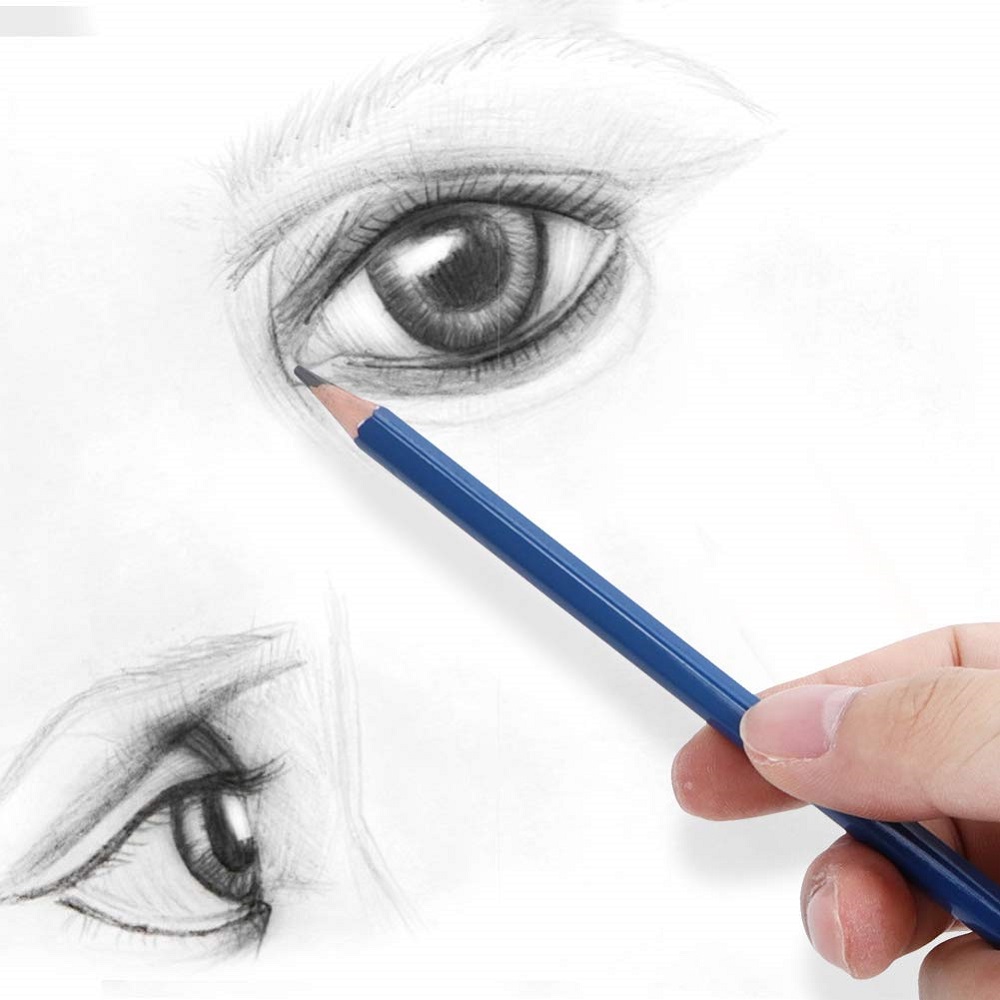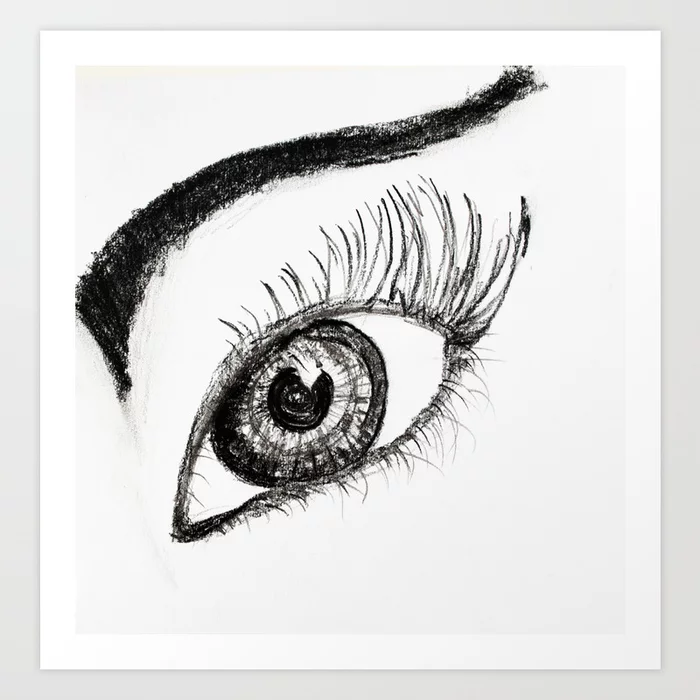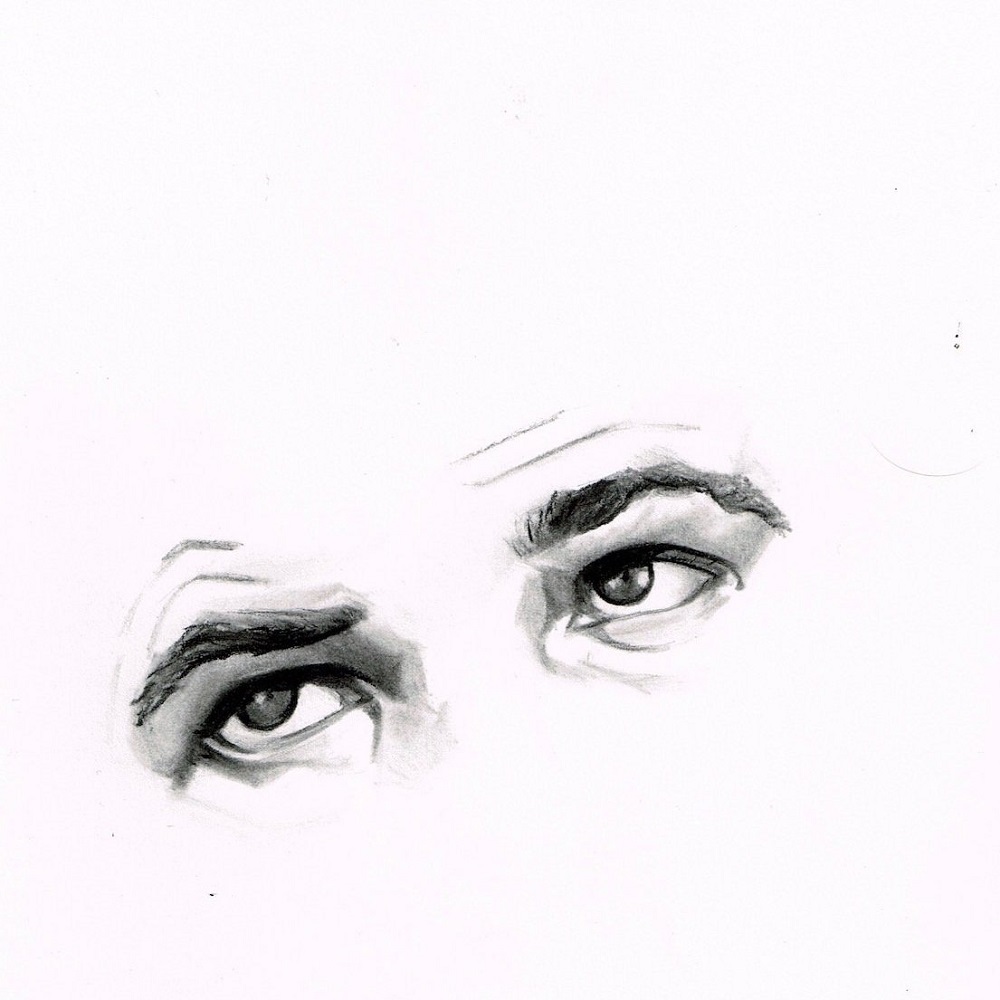Charcoal drawing is a powerful and evocative art form, particularly when it comes to depicting the human eye. The interplay of light and shadow can create depth, emotion, and realism in your work. This article explores the significance of light and shadow in eye charcoal drawing, offering practical tips and techniques to enhance your skills.
Understanding Light and Shadow
The Basics of Light
Every object we see reflects light in various ways. Understanding how light interacts with surfaces is crucial for artists. Light has two primary qualities: intensity and direction. Intensity refers to the brightness of the light, while direction affects how shadows are cast. When drawing eyes, consider the light source’s position, which determines where highlights and shadows will fall. An effective use of light can make your drawing more lifelike.
The Role of Shadow
Shadows provide essential information about the form and depth of an object. They enhance the three-dimensional quality of your artwork. In eye drawings, shadows contribute significantly to shaping both the eyeball and the eyelids. The areas around the eye, such as the cheek and brow, also play crucial roles in defining the overall look. Shadows give context, adding layers of meaning to your subject.

Materials and Techniques
Choosing the Right Charcoal
Selecting high-quality charcoal is vital for achieving rich contrast in your drawing. There are two main types to consider: compressed charcoal and vine charcoal. Compressed charcoal yields deeper blacks and is excellent for bold lines. Vine charcoal is softer and easier to erase, making it ideal for sketching and lighter shading. A combination of both can provide versatility, allowing you to explore different effects.
Working with Blending Tools
Blending tools enhance the smooth transition between light and dark areas. Options such as blending stumps, tortillons, or even soft cloths can help you achieve a soft gradation of tone. When blending, keep in mind the direction of the light source. This will create more convincing shadows and highlights. Practice blending to find a technique that complements your style.
Techniques for Capturing Light
Creating Highlights
Highlights are essential for making the eye come alive. The white part of the eye (the sclera) should appear bright, especially where direct light hits. Use an eraser to lift charcoal for these highlights. This technique helps create a stark contrast between the highlighted areas and the surrounding shadows. Remember that less is often more when it comes to highlights.
Layering Techniques
Layering is crucial for achieving depth in your drawing. Start with a light application of charcoal to establish the basic shapes. Gradually build up layers of darker tones. This method allows you to control the intensity of the shadows. Pay attention to the curvature of the eye, as darker areas will often appear on the inner corners and beneath the eyelids. Gradually building these layers creates a more dynamic and realistic portrayal.

Focusing on the Eyelids
Understanding Eyelid Shadows
The eyelids play a pivotal role in shaping the overall expression of the eye. They cast distinct shadows based on their position relative to the light source. The upper eyelid typically casts a shadow on the eye itself, while the lower eyelid receives light. Understanding this dynamic is vital for effective drawing. Take note of how these shadows interact with the eye, as this detail can significantly affect the viewer’s perception.
Highlighting Eyelash Effects
Don’t overlook the eyelashes in your drawing. Depending on the light, eyelashes can create both shadows on the skin and highlights on each lash. Use fine strokes to draw the lashes, varying the pressure for depth. You can also use a lighter charcoal or an eraser to create subtle highlights on individual lashes, enhancing their appearance.
Exploring the Surrounding Features
The Face and Eye Relationship
The eye is not isolated; it exists within the context of the face. Understanding the relationship between the eye and surrounding facial features is essential. Shadows on the brow, cheeks, and nose can help define the shape and positioning of the eye. Observing these subtle dynamics adds realism to your drawing.
Capturing Emotional Context
Light and shadow also convey emotion. Think about how different lighting conditions affect the mood of your drawing. Dramatic shadows can create a sense of drama or tension, while softer light can evoke calmness. Always consider the emotional context you wish to present and adjust your light and shadow accordingly. This approach adds depth beyond mere representation.

Practice and Observation
Studying Reference Materials
To improve your skills, regular practice is essential. Use photographs or real-life subjects as references. Pay attention to how light interacts with the eyes in various conditions. This awareness can enhance your observational skills and help you replicate those effects in your drawings. Look for subtle shifts in light and shadow that convey realism and emotion.
Daily Sketching Exercises
Incorporate daily sketching into your routine. Set aside time to focus specifically on light and shadow work. Use quick sketches to experiment with different lighting angles and shadow placements. This consistent practice will build your confidence and help you gain a better understanding of how light affects your subjects. Consider using a simple ballpoint pen for quick studies to help you focus on shadow shapes and forms without being concerned about detail.
Final Touches and Presentation
Refining Details
Once your drawing is nearly complete, take time to refine the details. Go back and assess your highlights, shadows, and overall shape. Use a sharp charcoal pencil for fine lines and detail work, particularly in the iris and pupil. This attention to detail makes your eye drawing more compelling and lifelike, enhancing the overall impact on the viewer.
Choosing the Right Presentation
Finally, consider how you want to display your work. Charcoal drawings can smudge easily, so framing them under glass is often advisable. Choose a frame that complements your artwork without drawing attention away from it. If exhibiting your work, consider using professional mounting options that will protect it while allowing viewers to appreciate your skillful use of light and shadow.
Embracing Your Artistic Journey
Finding Your Unique Style
As you work with light and shadow in your eye charcoal drawings, don’t forget to explore your unique artistic style. Each artist has a distinct voice, and finding yours can be both rewarding and liberating. Experiment with different techniques, compositions, and interpretations of light and shadow. Perhaps you prefer dramatic contrasts or a softer, more ethereal approach. The beauty of charcoal lies in its versatility; feel free to push boundaries and redefine conventional notions of realism.
Sharing Your Work
Once you’ve created pieces you’re proud of, consider sharing your artwork with others. Join local art groups, participate in exhibitions, or even share your eye charcoal drawing on social media platforms. Engaging with other artists provides valuable feedback, inspiration, and validation. You can also collaborate with peers or take part in workshops to further enhance your skills. Remember, every drawing is a step on your artistic journey, leading you closer to mastering the captivating interplay of light and shadow in your art. Embrace the process, celebrate your progress, and keep creating!
Conclusion
The impact of light and shadow in eye charcoal drawing cannot be overstated. Mastering these elements significantly enhances the depth and realism of your artwork. By understanding the basic principles of light and shadow, using the right techniques and materials, and continually practicing your skills, you can create captivating drawings that resonate with viewers.
Incorporate emotional context along with the relationship of the eye to the surrounding features. Regular practice and observation will further refine your abilities. So grab your charcoal, immerse yourself in your subject, and create artwork that not only captures an eye’s likeness but also conveys power and emotion. Enjoy the journey of exploration and expression as you hone your craft!